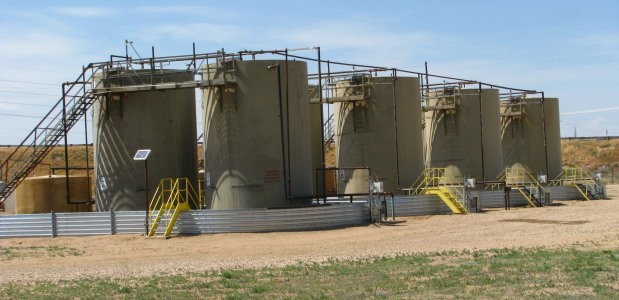
NIOSH Documents High Benzene Exposures During Flowback Tank Gauging
Because workers' exposures can exceed the NIOSH REL and STEL, the team recommends monitoring workers, equipping them with flammable gas monitors and respiratory protection as an interim measure, and controls such as alternative tank gauging procedures and dedicated sampling ports.
A NIOSH team posted on the agency's blog a summary of their evaluations of workers' exposures to VOCs during oil and gas extraction flowback and production testing activities. Eric J. Esswein, MSPH, CIH, and colleagues collected pre- and post-shift urine samples from flowback workers to evaluate exposure to benzene -- a carcinogen – measuring benzene metabolites in order to indicate some level of exposure during the work shift. The team also took short-term and full-shift personal breathing zone and area air sampling for exposures to benzene and other hydrocarbons using standard methods and analyses listed in the NIOSH Manual of Analytical Methods, according to their post.
Flowback is the return of process fluids from the well bore and their collection and storage in surface tanks after hydraulic fracturing; returning fluids can contain a number of naturally occurring materials, including hydrocarbons. Workers gauge the fluid levels in both flowback and production tanks with hand-held gauges through access hatches at the top of the tank.
Fifteen of the 17 air samples exceeded the NIOSH recommended exposure limit of 0.1 ppm (0.32 mg/m3). Six of the 17 exceeded the ACGIH threshold limit value (an adjusted value of 0.25 ppm because the flowback technicians’ work shifts were 12 hours and they report that direct-reading instruments measured peak benzene concentrations at open hatches exceeding 200 ppm at several sites.
"These findings suggest that benzene exposure can exceed the NIOSH REL and STEL and present an occupational exposure risk during certain flowback work activities. Based on these preliminary studies, primary point sources of worker exposures to hydrocarbon vapor emissions are opening thief hatches and gauging tanks; additional exposures may occur due to fugitive emissions from equipment in other areas in the flowback process (e.g., chokes, separators, piping, and valves), particularly while performing maintenance on these items. The NIOSH research found that airborne concentrations of hydrocarbons, in general, and benzene, specifically, varied considerably during flowback and can be unpredictable, indicating that a conservative approach to protecting workers from exposure is warranted. Hydrocarbon emissions during flowback operations also showed the potential to generate flammable and explosive concentrations depending on time and where measurements were made, and the volume of hydrocarbon emissions produced," they wrote.
The post includes nine recommendations for protecting workers including giving them calibrated portable flammable gas monitors with alarms, using respiratory protection as an interim measure, monitoring their exposure to benzene and other contaminants, and implementing controls such as alternative tank gauging procedures and dedicated sampling ports.